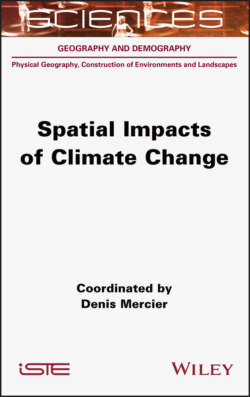Читать книгу Spatial Impacts of Climate Change - Denis Mercier - Страница 24
2.1. Introduction
ОглавлениеContemporary climate change affects the cryosphere; the thermal changes at stake today are limited compared to the great climatic oscillations that affected the Earth, particularly during the past 2.58 million years of the Quaternary Period. Indeed, the areas concerned, and the volumes of ice are undeniably not of the same order of magnitude. During the great cold periods of the Pleistocene (2,580,000 to 11,700 years ago), the terrestrial cryosphere capitalized on the planet’s land spaces led to an eustatic decrease of around 120 to 130 m in the global ocean. In retrospect, during previous interglacial periods such as the Eemian (128,000 to 116,000 years ago), the temperature was around 3.5°C higher than today’s, which led to a significant melting of the terrestrial cryosphere and a rise in the average sea and ocean level of between 6.6 and 9.4 m above the current level (Lageat 2019). We are now experiencing a few decimeters per century in sea level rise, as a result of the partial melting of what is currently left of the Earth’s cryosphere. However, over the next several centuries, the continued melting of the cryosphere could bring the average sea and ocean level back to the Eemian level average, due in part to the melting of Greenland’s ice. However, the consequences of this current melting of the cryosphere due to warming air temperatures affect all components of the climatic and hydrological mechanics.
Spatial Impacts of Climate Change, coordinated by Denis Mercier. © ISTE Ltd 2021.
